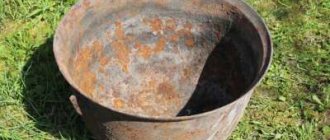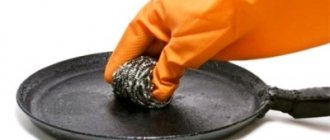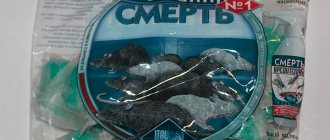Fish deserves to occupy one of the main places on our table. Nevertheless, many housewives prefer not to cut up this product, but to buy it already packaged in the store. After all, there is an opinion that it is difficult to clean and cut river and seafood because of the mucus covering the carcasses and the scales flying in all directions. In fact, cleaning and preparing fish for heat treatment is not difficult; the main thing is to know how to do it correctly.
What you need to clean and cut fish
Many of us prefer to clean and cut up carcasses with a regular kitchen knife. But there are many cleaning methods that may require other tools:
- sharp knife;
- scaler;
- grater;
- Chinese chopsticks;
- fork;
- tablespoon;
- fishing knife;
- high pressure hose or Karcher;
- tin;
- drill;
- latex gloves;
- kitchen scissors.
A sharp kitchen knife is far from the only device that can be used to clean fish.
How to clean fish correctly
Of course, cleaning river and sea fish differs. Mainly due to the size of the scales. Marine is easier and faster to clean, as it is covered with small scales that quickly come off with physical impact. However, there are some rules you should know to make your job easier.
How to clear mucus
Some types of fish need to be cleared of their mucus layer before removing their scales. There are several options to solve this problem:
- Place the carcass in very hot water for 15–20 seconds. During this time, the mucus will disappear and you can begin cleaning.
- The second method is also quite simple. Before cleaning, rub the product with salt. The carcass stops sliding in your hands.
- When fishing, you can use sand instead of salt. But this method is not very convenient, because it is difficult to thoroughly wash the grains of sand from the meat later.
- For 3 l. dilute 1 tbsp of water. l. table vinegar. Place the carcasses into the solution for 1–2 minutes. Mucus is easily removed.
It's time to catch eels. We caught them and brought them home. The fish is interesting, but how to clean it from mucus? They brought the fish, put it in a bowl or any other dish and sprinkled the fish evenly with coarse salt. They let it stand for 20 minutes. Salt eats away mucus. All that remains is to rub a little with the remaining salt and rinse with water.
Wladimir
https://www.rybolov.de/poleznye_sowety/aal
I make it even simpler. Right when fishing, roll the fish in dry sand, wrap it tightly around the scruff of the neck with one hand, take it by the head with the other and stretch it out. And do this several times, it cleans great.
Neighbour
https://www.rybolov.de/poleznye_sowety/aal
You can also get rid of mucus not only on eels, but also on other fish using a vinegar solution.
Fossil
https://www.rybolov.de/poleznye_sowety/aal
The correct way to remove scales
Before you start cleaning, fill the sink, basin or any other container with water. We lower the carcass into the water. This will avoid unnecessary cleaning: the scales will not scatter throughout the kitchen, but will settle in the liquid.
- We cut off the fins so as not to get hurt by them when cleaning.
- We firmly grasp the fish by the head with one hand.
- In the other hand we take a fish scaler.
- We begin to clean from the tail towards the head, prying off the scales with a fish scaler.
- After cleaning, rinse the carcass under running water.
Place the fish in water and clean it with a fish scaler
Instead of a fish scaler, you can use a fishing knife, a sharp kitchen knife, a tablespoon or a fork. This method is perfect for various types: river and sea. However, with larger individuals you will have to put in more effort.
How to properly clean fish
Cleaning in quick ways
One of the most effective and fastest ways to clean fish from scales is to clean it with a grater. For this method we use a grater with 4 edges; it is more convenient to use.
- Place the fish on a work surface and press down with your hand. If the fish is small, you can pierce the tail with a fork or an awl, holding the tool and fixing the carcass.
- Let's take a grater. Using the side intended for preparing vegetable puree (with sharp teeth), we clean off the scales in the direction from the tail to the head.
- The scales at the base of the tail can be scraped off with the coarse side of a grater.
- We rinse the product under running water.
You can remove scales from fish using a grater.
In nature, instead of a grater, you can use a tin can, punching the bottom with nails. Pink salmon, chum salmon, pike perch and other species are cleaned this way. For individuals with hard scales, you can use the coarse edge of a grater.
Instead of a grater, you can use a tin can, pierced with nails.
How to quickly peel fish with a grater
How to do it using... a drill
Traditional methods are often unusual, but nevertheless effective. We will tell you how to clean using a conventional drill:
- Prepare a clean container for the fish.
- We place the drill on a stool and secure it with tape.
- Insert a drill with a diameter of 10 mm into the drill.
- Turn on the tool, setting the mode to the minimum number of revolutions.
- Next to the stool we place a trash can or bag into which the scales will fall off.
- We take the carcass, holding it above the bucket, and place it under the drill.
- We clean off the scales in this way from the tail to the head.
Possible consequences
Quite often, housewives neglect safety precautions and face various injuries. In such a matter, it is important to be extremely careful. At first glance, it seems that the process of removing scales is a harmless matter, but it is not so:
- When cutting, you should not rush, otherwise you will end up with a fish rib driven into your hand. Quite often, when cutting up a carcass, housewives accidentally drive a bone into their hand. This may happen due to the hand slipping or other reasons. But the fact is that the moment the rib penetrates the skin of the arm, it can break and remain there. Then you will not be able to remove the foreign body yourself, since you will have to make an incision and remove the bone. Acute pain sensations are guaranteed. Therefore, be extremely careful.
- You can often cut your hand while cleaning. This is due to the fact that housewives begin to quickly remove the scales, holding the carcass by the tail. Although the knife is angled and in the opposite direction of the hand, the edge of the tool can catch fingers and cause serious injury. For this reason, near the tail it is necessary to slow down and complete the work with special care.
- As a rule, during processing the scales fly in all directions. Therefore, very often fish particles get into the eyes. Of course, you shouldn’t perform such manipulations with glasses, but precautions won’t hurt. It’s better to put the product in a bag or in a container with water and process the carcass. If a particle does get into the eye, a burning pain will occur, which will subside only after a couple of days.
Removing fish scales is a nasty task and is considered one of the dirtiest procedures in cooking. But with experience and the right tools, the cleaning process will be reduced. To avoid harming yourself, follow safety precautions and take your time. Then the risk of injury will be significantly reduced.
How to properly cut a carcass
After cleaning the scales, the fish must be cut in order to proceed to the cooking stage.
- Pressing the carcass to the cutting board, we make an incision on the back at the base of the head. If we plan to cook fish without a head, we cut it off immediately.
- Then we make a cut along the ridge.
- We cut through the belly along the entire length of the carcass.
- We take out the insides.
- Rinse under running water.
- Inserting a knife into the cut on the back, smoothly cut the fillet from the bones.
- Turn over to the other side. Cutting meat from bones will now be easier from the tail.
- Place the halves on the board so that the skin is in contact with the work surface.
- Holding the knife at an angle of 45 degrees, pry the skin at the base of the tail.
- Cut the fillet from the skin.
- Let's probe it. If there are small bones left, remove them with tweezers.
How to gut with Chinese chopsticks
This method of gutting fish is used when it is necessary to keep the carcass intact.
- On the abdomen near the caudal fin, make a shallow transverse cut with kitchen scissors or a knife.
- When you tear off the fish's mouth, insert a stick inside, moving it over the gills.
- Pressing the gills with a stick, we insert the stick deeper, pushing it inside until the cut on the abdomen.
- We do the same with the second stick, on the other side of the carcass.
- Holding the carcass tightly, we bring the ends of the sticks together from the outside and begin to twist them.
- As you scroll the sticks, we gradually pull them out of the carcass.
- We remove the insides along with the gills from it, rinse the inside with water.
We pinch the ends of the sticks and twist them
How to gut fish the Chinese way
Selected recommendations
In conclusion, some useful tips from professionals:
- It is easiest to clean freshly caught fish, so true fishermen prefer to do this immediately after the catch.
- Cleaning will speed up if you keep the fish in cold water acidified with vinegar for some time.
- If there are no wounds on your hands, rub them with salt before cleaning the fish, then it will not slip out at the most inopportune moment.
- If you receive a specimen with dried scales, first moisten it with water.
We hope that now you will not be able to deny yourself the pleasure of eating healthy fish delicacies due to the unpleasant process of scraping the scales. When passing by a fish row, feel free to choose the specimens you like, regardless of the abundance of scaly covering.
Housewives often use a plastic bag, which prevents scales from scattering. They take a fish carcass and place it inside, then scrape off the scales. The waste stays right in the bag. This means you won't have to collect fish particles all over the room. How to clean fish from scales using proven tips:
- To avoid holding the carcass during the cleaning process, it is recommended to nail it directly to the board using an awl or nail. The method is mainly used by tourists on hikes.
- Experts say: in order for the fish to clean itself faster, it is necessary to open its mouth as far as possible and insert a toothpick.
- Stretching the fish until the bones crunch helps simplify the process. First secure it in the ponytail using clips or nails. Now grab the eyes with your fingers and pull the fish towards you. You need to pull until you hear the cracking of bones.
- Sometimes it happens that there is neither a knife nor a spoon at hand, and therefore a problem arises. In this case, an ordinary tin can, a nail and a block will help. Use a nail to make holes in the jar so that the ragged holes are on the outside. Now you need to attach the jar to the block and you will get a kind of homemade grater.
- Nailing beer caps to a wooden plank works great for removing scales. First, prepare a narrow wooden strip and attach the covers to it so that the tip is on the outside. Then scrape to remove the scales.
How to cut fish in different ways
Fish products can be cut in different ways. It depends on how we are going to prepare them.
How to quickly fillet
To quickly and efficiently fillet the meat, we need a sharp knife.
- Place the fish on a cutting board.
- Cut off the head.
- We make an incision along the ridge along the back.
- Cut the carcass into halves, separating it from the bones.
- Place half of the carcass on the board so that the meat is on top.
- We pry the skin with the tip of the knife, holding it with our fingers.
- Cut the fillet, holding the knife at an angle.
When separating the fillet from the skin, hold the knife at an angle
This method is also called “Finnish”. For cutting, it is more convenient to use a knife with a long blade.
For portioned “round” pieces
- After cleaning the scales, remove the remaining fins.
- Cut off the head.
- The skin and spine are not removed.
- We clean out the insides through the hole formed after cutting off the head. You can use a tablespoon.
- We clean the inside of the carcass from films. We do not cut the belly, we leave it whole.
- We rinse from the inside.
- Dry lightly.
- Cut into portions - rings, or, as they are also called, “rounds”.
- The thickness of the pieces varies from 1 to 2 cm.
Cut into portions
For stuffing
Basically, fish is stuffed either in portions or whole.
- When cleaning scales, we try not to damage the skin.
- We make deep cuts on the back.
- We cut through the rib bones running along the ridge.
- We break the ridge at the tail and head and remove it from the carcass.
- We remove the insides through a cut on the back.
- We rinse from the inside.
- Cut out the meat and bones from the inside.
- Leave the meat on the skin 1/2 cm thick.
- Remove the gills and eyes from the head.
- Stuffing.
To remove the ridge, make an incision along the back
Another way to cut fish
- We cut the skin around the head of the fish.
- Pry it with the tip of a knife.
- We remove the skin with a “stocking” from the carcass.
- We cut the ridge at the tail.
- We wash the skin without separating it from the tail.
- We gut the carcass and wash it.
- Separate the bones.
- We use the meat as minced meat and stuff the removed skin.
- We tie it with thread and cook.
The most delicious and juicy chum salmon you've ever cooked
The first thing you need to do to cook chum salmon is defrost it.
Avoid the temptation to put the fish in the oven or under running warm water - this will destroy its structure and make it less juicy. Instead, simply move the fish from the freezer to the bottom shelf of the refrigerator. Chum salmon as a whole piece will defrost in about a day, fillet - a little faster. After the fish is defrosted, clean it of scales, cut the fillet with a sharp knife, and then, taking tweezers in your hands, pull out the small bones. Read on the topic: How brine makes meat and fish more juicy
Dissolve salt and sugar in a liter of clean, cool water and lower portioned pieces of fillet, skin side up. After 30 minutes, remove the chum salmon fillet from the brine, rinse it under running water and dry thoroughly with napkins. There is no need to additionally salt the fish - having been in the brine, it has already taken exactly as much salt as necessary.
You can start frying the fish. Yes, yes, don’t be surprised - it is frying, and not baking, that will keep the chum salmon juicy, since in this case you will be able to achieve ideal readiness of the fish, constantly monitoring the process. You will need a frying pan with a good non-stick coating, and if you don’t have one, take a regular frying pan and place a circle cut out of baking paper on its bottom. Pour in oil - how much depends on the size of the frying pan, but don’t be greedy, it should cover the bottom of the frying pan with a layer at least 2-3 millimeters thick.
Turn the heat under the pan to medium high, let the oil heat up and place the fillets skin side down. During the first minute of frying, use a spatula to press the fish to the bottom of the pan to help the skin cook better, then take a spoon and baste the top of the fillet with hot oil every minute. Fry the fish for about 5-6 minutes, watching as the bottom of the fillet slowly turns pale pink due to the heat coming from the pan. Towards the end of frying, start shaking the pan from side to side so that the fish leaves the bottom of the pan, and remove the fish at the moment when the pale pink layer reaches the middle of the fillet. If the non-stick coating of the frying pan is not very good and the skin still does not come off, use a spatula - you will achieve perfectly fried skin next time, but now you need to save the fish. No need to turn the fish over! It will reach perfect doneness right on the plate from the residual heat, with the meat inside pink, firm and juicy, easily shredded. Serve the fried chum salmon immediately with lemon wedges or your favorite sauce.
How to beautifully lay out the slices?
—Search by diary
—Subscription by e-mail
—unknown
—Interests
— Regular readers
—Communities
-Statistics
Sunday, October 20, 2013 14:11 + to quote book
Pickling chum salmon at home is quite simple. First you need to choose the right fish.
Chum salmon most often ends up on store shelves deep frozen. In this case, it is better to choose a product that is frozen once. It is easy to distinguish it from multi-frozen ones by its appearance. The fish should be silver in color, undamaged, with straight fins. It is better to choose a whole carcass, including the head. You will spend more time cutting it, but you will be sure that the fish is not spoiled.
Many factors influence how to properly pickle chum salmon. Everything is important: from the material of the container in which salting occurs to the grinding of the salt. The container for salting chum salmon should be plastic or enameled. Do not choose metal utensils - the finished fish may acquire a metallic taste. Salt should be rock salt or first grind. It draws out excess moisture from the fish and allows it to brine in its own brine. The optimal amount of sugar to salt is 1:3. When salted, chum salmon turns out drier than salmon. Therefore, when cooking, you can add a little olive oil to the fish. It will make chum salmon meat juicier.
Classic American salmon steak
- Salmon steaks
- 2-3 tablespoons olive oil
- 1/2 lemon
- Salt
- For the sauce:
- 100 grams unsweetened yoghurt
- 1 fresh cucumber
- 1 clove of garlic
Soak the sliced steaks in water with half a lemon squeezed into it for 10-15 minutes, and leave a little juice for sprinkling when frying.
After removing the steaks, remove the bones from the piece - the easiest way to do this is with tweezers. If excess fat is a concern, you can trim a couple of centimeters from the belly of the steak. Prepare the sauce by peeling and finely grating the cucumber, mixing it with yogurt and crushed garlic. Now heat up a special frying pan for steak with a ribbed bottom, add a little olive oil and lay out the steaks.
Three minutes is the universal frying time for each side: salt and pour lemon juice over the fish, keeping an eye on the time. If the meat has become lighter in color, the “grid” of the frying pan is clearly visible and juice still comes out of the steak when pressed, get ready to serve.
If we are talking about trout, then you can increase the frying time by one minute - the meat, which is softer and more delicate in structure, will retain its juice and hold its shape more tightly. But dry tuna, on the contrary, is afraid of long frying: two minutes is enough - it’s much easier to dry it out.
In nature or on the site of a private house, cleaning fish does not cause much trouble. But many housewives are interested in how to clean fish so that scales do not fly in different directions in a small apartment. It turns out there are several simple ways to do this.
How to properly pickle chum salmon?
So, the fish has been selected. All that remains is to salt it properly.
First you need to let the carcass defrost. After this, cut it crosswise into two parts. We separate the ridge and large bones. Mix 1 tbsp. salt with 0.5 tbsp. Sahara. Add spices and peppercorns to the mixture to taste. Coriander and bay leaves add a particularly piquant taste to the fish. Sprinkle the fish pieces with the spicy mixture and place them in a container, skin side up. Salt for 2-3 days. Salted chum salmon will become more elastic and tender if you sprinkle it with cognac. For 1 kg. Fish takes 2-3 tbsp.
Another recipe is salted salmon. Cut the fish into pieces 2-4 cm thick. Prepare the brine. In 1l. add 2 tbsp of water. l. salt, 1 tbsp. l. sugar, bay leaf, 5 peppercorns. Heat and let cool. Pour brine over chum salmon. Leave in a warm place for 2-3 days. Transfer to the cold for 4-5 days.
To salt fish fillets, it is best to use the following method.
Composition, calorie content and beneficial properties
Chum salmon contains a high concentration of healthy protein, which is completely absorbed by the body. It also contains valuable fish oil and omega-3 acids. Minerals and vitamins are presented in the same variety as in more expensive red fish.
Chum salmon is very beneficial for health:
- strengthens the nervous system;
- protects against atherosclerosis and helps fight bad cholesterol;
- contains many antioxidants;
- strengthens blood vessels and heart;
- improves cognitive and visual functions;
- reduces sugar levels and saturates the blood with hemoglobin;
- Helps the immune system fight harmful agents.
Regular consumption of chum salmon reduces the risk of diseases of the stomach, heart, and metabolic system.
| BJU and calorie content of smoked chum salmon per 100 g | ||
| Parameter | cotton | g/k |
| Calories | 178 kcal | 107 kcal |
| Squirrels | 22 g | 20 g |
| Fats | 10 g | 3 g |
| Carbohydrates | 0 g | 0 g |
What method do you use to smoke chum salmon?
HotCold
The smoked product contains a lot of salt, so you need to eat it in limited quantities. To prevent high levels of carcinogens, fish must be properly prepared and smoked in accordance with technology.
Preparation:
- We cut the fish, separate the fillet, cut it into small portions. Mix oil and spices. Add the oiled brine to the chum salmon.
- Mix. Place the fish in a clean jar and pour the remaining oil on top. We put the chum salmon in the refrigerator for a day. The appetizer is ready.
Another recipe for making chum salmon has the mysterious name sagudai. Using this method, the fish turns out juicy and tender, melting in your mouth. Sagudai is a traditional dish from the north of Russia. It can be prepared from any fish of the salmon family.
LiveInternetLiveInternet
-Music
–Categories
- cooking (3015)
- baked goods (1060)
- snacks (475)
- chicken dishes (94)
- fish dishes (50)
- desserts (33)
- bread in a bread machine (13)
- dietary dishes (7)
- soups (7)
- fish dishes (1)
- chicken dishes (1)
- dishes from leftovers (1)
- decoupage (1574)
- pictures for decoupage (193)
- my works (14)
- do it yourself (1306)
- be healthy (489)
- garden and vegetable garden (250)
- blanks (244)
- music (179)
- favorite poems (141)
- what I love (139)
- useful tips (107)
- computer is easy (57)
- knitting (55)
- drawing (49)
- PHOTOSHOP LESSONS (47)
- audiobooks (41)
- cinema (38)
- diabetes (33)
- ZhZL (29)
- performances (20)
- amulets and spells (18)
- Orthodox affairs (18)
- psychology (12)
- original song (12)
- ribbon embroidery (12)
- dietetics (10)
- humor (7)
- decoupage tips (6)
- lira (3)
- interesting sites (3)
- important information (2)
- diary diagrams (0)
–Search by diary
–Subscription by e-mail
–Interests
– Regular readers
–Communities
–Broadcasts
-Statistics
Preparation:
- Cut the fillet into small pieces. Cut the onion into half rings. Salt and pepper the fish, add bay leaf. Fill chum salmon with oil.
- Prepare the marinade: mix water and vinegar. Add it to the fish.
- We put chum salmon in the refrigerator under pressure. Readiness is determined by the color of the fish - it should turn slightly white.
Salted chum salmon is an incredibly tasty appetizer. There are many recipes for how to pickle chum salmon at home. The cooking principle is almost always the same. You need salt, sugar, spices for the marinade and 2-3 days in the refrigerator for pickling. Please note that the most important factor influencing the taste of the finished product is the quality of the fish!
The most delicious and juicy chum salmon you've ever cooked
New online lesson “Modern side dishes” Meet on April 17 at 20:00 Moscow time Sign up now while there is still time!
–>
I absolutely cannot go to RuNet. For example, yesterday, out of some fright, I decided to look for a recipe for making chum salmon, and this unfortunate fish, tortured with mayonnaise, foil and cremated in the oven until completely unrecognizable, still stands before my eyes. It is clear that the only purpose of these tricks is to cook chum salmon so that it turns out juicy, but these would-be cooks also teach others, and there is no one to stop them. Well, your humble servant will again have to put this heavy burden on his shoulders.
Why does chum salmon come out a little dry? It’s just that chum salmon is not salmon, no matter how much you might want the opposite, and no amount of tricks will turn it into salmon. Being a wild fish, chum salmon eats less and moves more, which means it is not as fatty as salmon, and the only way to dry it out is by cooking it longer than necessary. It’s very simple to prepare juicy chum salmon, you just need to treat it with understanding and respect, and you will get a tasty and healthy dish. Me too, an open secret.











